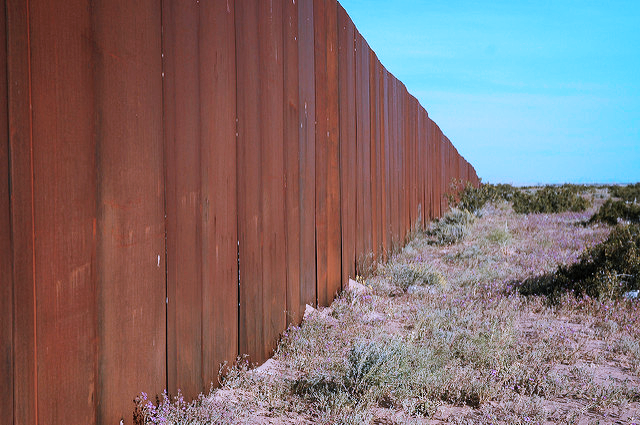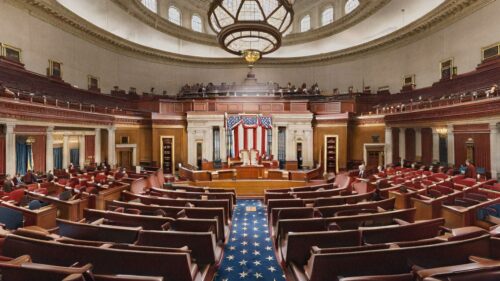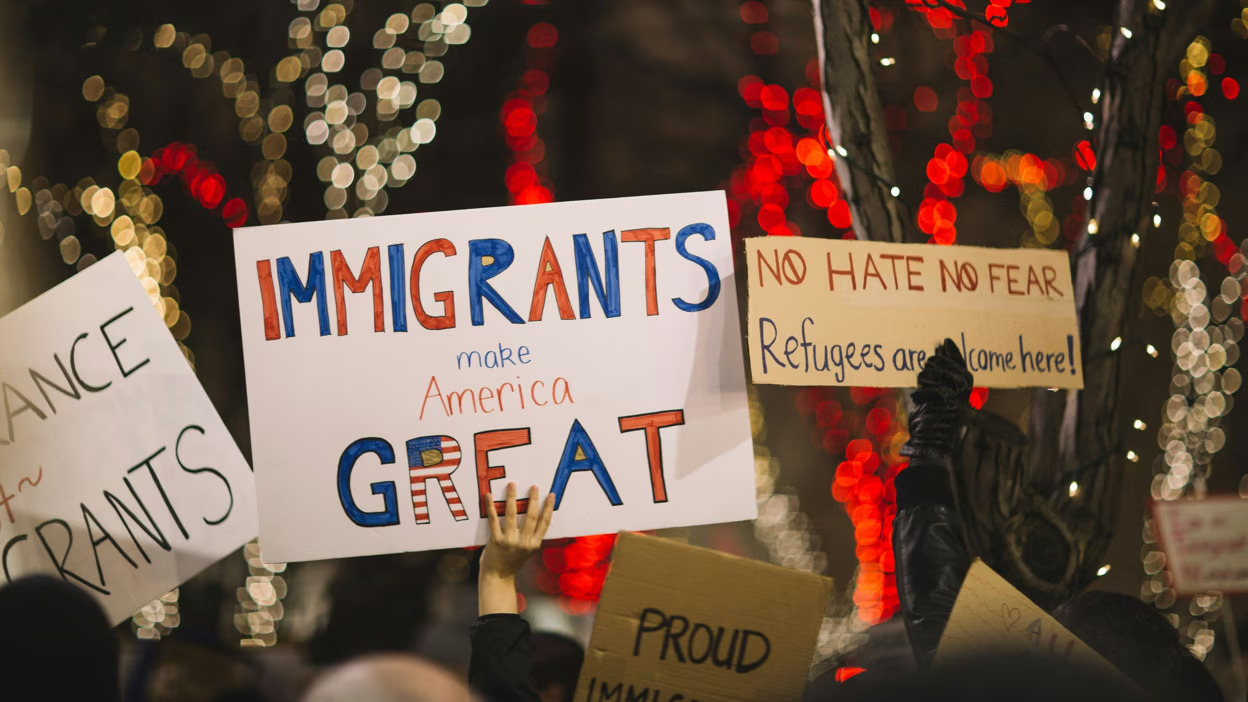Building a fortified and impenetrable wall between the United States and Mexico is recurrently presented as a simple and universal solution to border security. The reality is that the construction of a border wall is not a meaningful replacement for more effective, cost-conscious enforcement measures. Those who persist in their demands for a wall ignore the financial, legal, and natural obstacles that make the wall an unviable option that would also lead to a series of negative consequences throughout the border region.
This fact sheet provides context to the border security debate by highlighting some of the existing and imminent problems surrounding the construction of a new or expanded border barrier along the entire southwest border.
Extensive physical barriers already exist along the U.S.-Mexico border.
- The U.S.-Mexico border is 1,954 miles long. Border security involves managing the flow of people and goods across the border and preventing the illegal entry of either into the United States. The existing border security infrastructure includes physical barriers, aerial surveillance, and technology. More than 21,000 Border Patrol agents—as well as other Department of Homeland Security (DHS) and Department of Justice (DOJ) personnel—staff ports of entry, Border Patrol stations, forward operating bases, and checkpoints.
- Current physical barriers along the U.S.-Mexico border include those intended to prevent illegal border crossings by foot (pedestrian fencing) and impede vehicles from smuggling persons or contraband (vehicle fencing). Secondary and tertiary layers of fencing further impede illegal crossings.
- As of early 2017, approximately 650 miles of border fence already existed: 350 miles of primary pedestrian fencing, 300 miles of vehicle fencing, 36 miles of secondary fencing behind the primary fencing, and 14 miles of tertiary pedestrian fencing behind the secondary fence.
- The existing barriers include tall metal or concrete posts, solid corrugated steel walls, metal fencing, and combinations of these designs.
- In addition to physical barriers, surveillance tools, towers, cameras, motion detectors, thermal imaging sensors, stadium lighting, ground sensors, and drones are part of the vast existing infrastructure aimed at stopping the unauthorized entry of people, drugs, arms, and other illicit items.
In the past, Congress acknowledged that additional physical barriers were not necessary.
- Though recent comments by the Border Patrol chief and GOP members of Congress show support for a wall, this is a change in tone from their past insistence that a wall was not necessary.
- The Secure Fence Act of 2006 (Pub.L. 109-367), a law that passed with bipartisan support in both the House and Senate, required the construction of about 850 miles of double layer fencing along five segments of the border.
- Two years later, Congress recognized that 850 miles of additional border fencing was not feasible or necessary. In 2008, the Consolidated Appropriations Act of 2008 amended the 2006 law to reduce the required mileage of reinforced fencing to “not less than 700 miles of the southwest border where fencing would be most practical and effective…” In addition, DHS is not required to install fencing “in a particular location along the international border of the United States if the Secretary determines that the use or placement of such resources is not the most appropriate means to achieve and maintain operational control over the international border at such location.”
- In the first two budgets passed under President Trump, Congress funded only 55 new miles of wall, prompting a Declaration of Emergency from President Trump.
Border barriers are expensive.
- In 2009, the Government Accountability Office (GAO) found that single-layer pedestrian fencing could cost approximately $6.5 million per mile. In addition, millions more would have to be spent on roads and maintenance.
- The easiest parts of the border fence have been built. The estimated cost of the remaining segments of fencing are between $15 and $25 billion, with each mile costing $16 million.
- The President’s proposed budget in Fiscal Year (FY) 2020 proposes a total of $5 billion for wall construction. However, the GAO has said in the past that CBP evaluated and designed proposed border barriers without including sufficient analysis on their exact cost. This means the wall could cost significantly more than CBP estimates.
- According to the FY 2017 DHS budget, $274 million was spent on border fence maintenance. Based on that expense, one can extrapolate that if fencing is built on the final two-thirds of the Southern border, the maintenance costs will triple to more than $750 million annually.
- In FY 2006, appropriations for building and maintaining border infrastructure were $298 million, and then jumped to $1.5 billion in FY 2007 to pay for the fencing mandated in the Secure Fence Act. FY 2016 appropriations were $447 million.
Until recently, federal agencies maintained that the wall was unnecessary.
- Though recent comments by the DHS leadership and GOP members of Congress show support for a wall, this is a change in tone from their past insistence that a wall was not necessary. Former Commissioner of U.S. Customs and Border Protection (CBP) Gil Kerlikowske said in January 2017, “I think that anyone who’s been familiar with the southwest border and the terrain … kind of recognizes that building a wall along the entire southwest border is probably not going to work,” adding that he does not “think it is feasible” or the “smartest way to use taxpayer money on infrastructure.”
- The head of the National Border Patrol Council, a union representing 16,000 Border Patrol agents which endorsed President Trump during his campaign, said, “We do not need a wall along the entire 2,000 miles of border.” He went on to say, “If I were to quantify an actual number, I would say that we need about 30 percent. Thirty percent of our border has to have an actual fence [or] wall.” The existing 650 miles make up more than 30 percent of the 2,000 mile border.
- According to an internal U.S. government study obtained by Reuters in April 2016, CBP indicated that more technology is needed along the border to create a “virtual wall.” The agency requested better radios and more aerial drones, but only 23 more miles of fences.
There are complications to building a wall.
- Natural barriers. The Rio Grande River runs along 1,254 miles of the border between Mexico and the United States and does not flow in a straight line—instead twisting, turning, and flooding regularly. Under the International Boundary and Water Commission, created in 1889 by the U.S. and Mexico, border barriers may not disrupt the flow of the Rio Grande. As a result, the current border fencing in Texas is located miles away from the border on private land owner’s property. In addition, the mountain range at Otay Mesa in California makes it extremely impractical to construct a wall or fencing.
- Private land ownership. After the passage of the Secure Fence Act, the government attempted to seize private property for purposes of constructing border barriers through eminent domain. These efforts led to protracted legal battles that in some cases lasted seven years. The federal government had to provide monetary compensation to the landowners and agreed to construct several access points along the fence on that property. Some of the existing gaps in the fence are in affluent areas where residents fought construction. It would likely cost the federal government considerable amounts of money to purchase land and build in those areas.
- Native American land. The Tohono O’odam Nation runs along 75 miles of the southwest border, and members of the tribe have already stated they will not allow a border wall to be built on their reservation. A wall would effectively cut the reservation in half and make movement across the border, and within the reservation, difficult. It would separate families and make it difficult for tribe members to care for burial sites located in Mexico. Additionally, federal law requires the federal government to consult with tribal governments before constructing on the land. Without the tribe’s support, the federal government could resort to condemning the land and removing it from the trust of the Tohono O’odam Nation.
Border barriers create a host of additional problems.
- Border deaths. History has shown that when barriers are erected along the border, people attempt to cross at more remote and dangerous locations. According to U.S. Border Patrol statistics, the southwest border witnesses approximately one death per day. Over the past 20 years, over 7,000 people have died of hypothermia, drowning, heat exhaustion, or dehydration.
- Harm to wildlife. The border region is home to many species, including some of the most endangered species such as the Sonoran Pronghorn, the Mexican gray wolf, and the jaguar. If their natural habitat is divided by a large barrier, animals are left with a smaller habitat and may venture outside their usual ranges, causing potential harm to the animals and people.
- Damage to the environment. A wall could impede the natural flow of floodwaters, resulting in damage and erosion, as it did in 2008.




